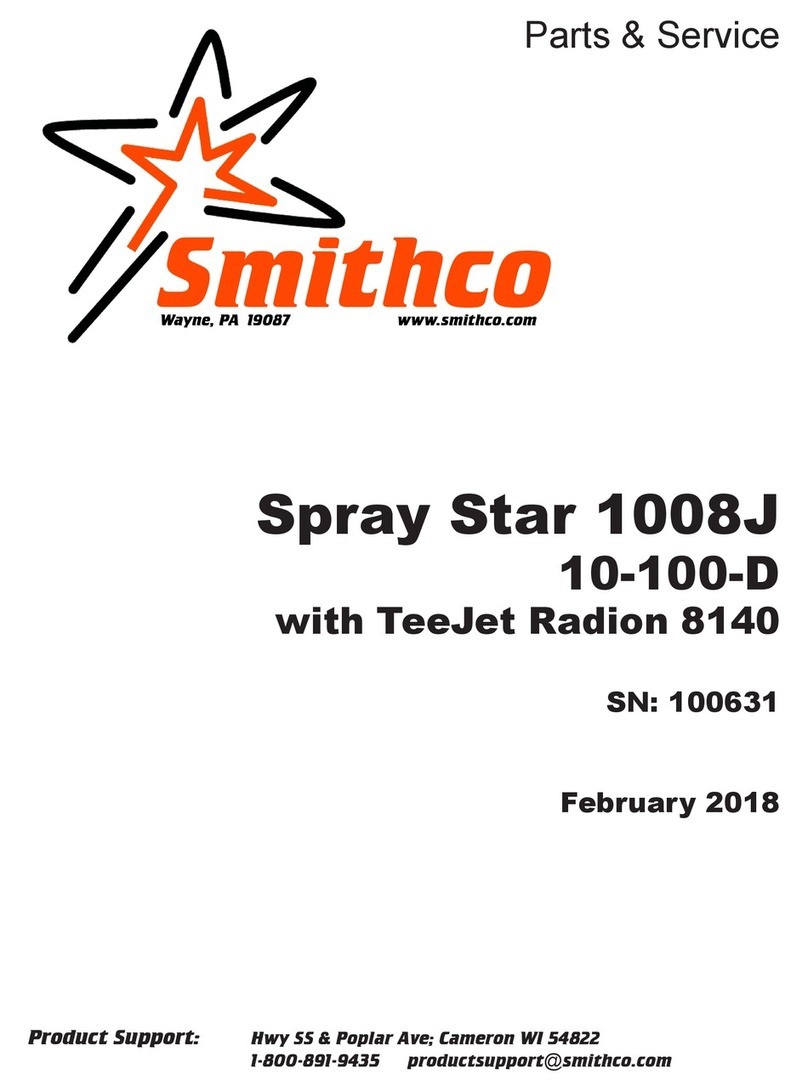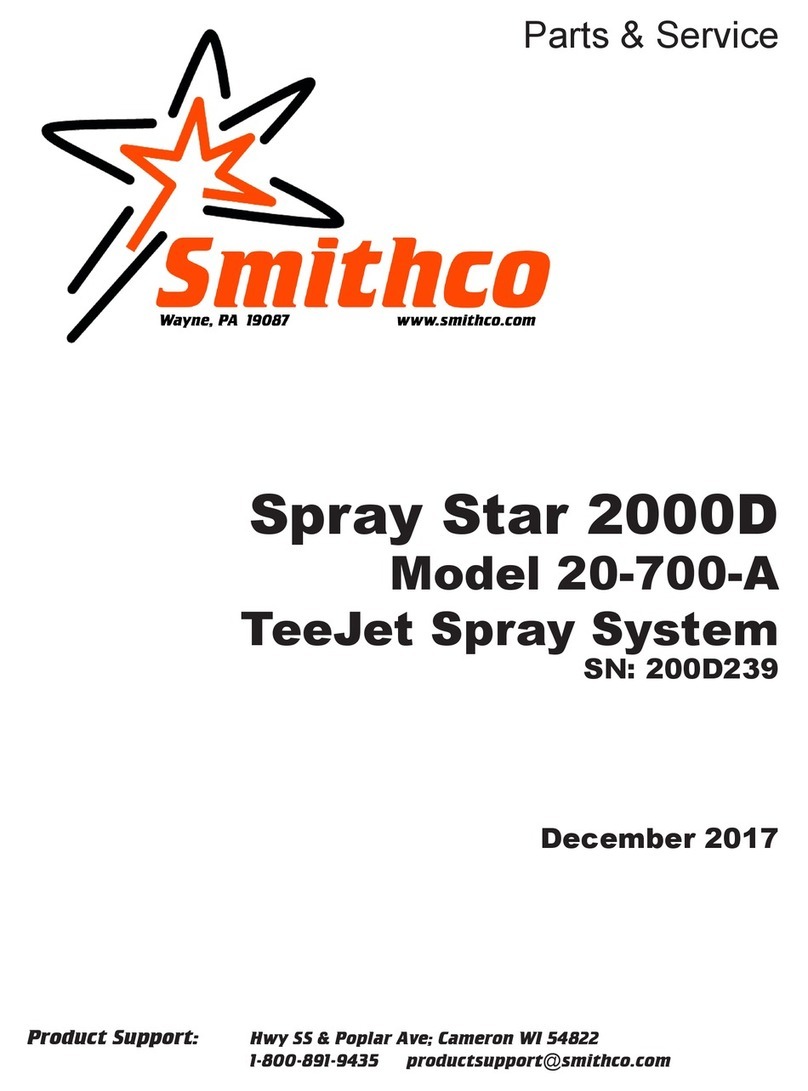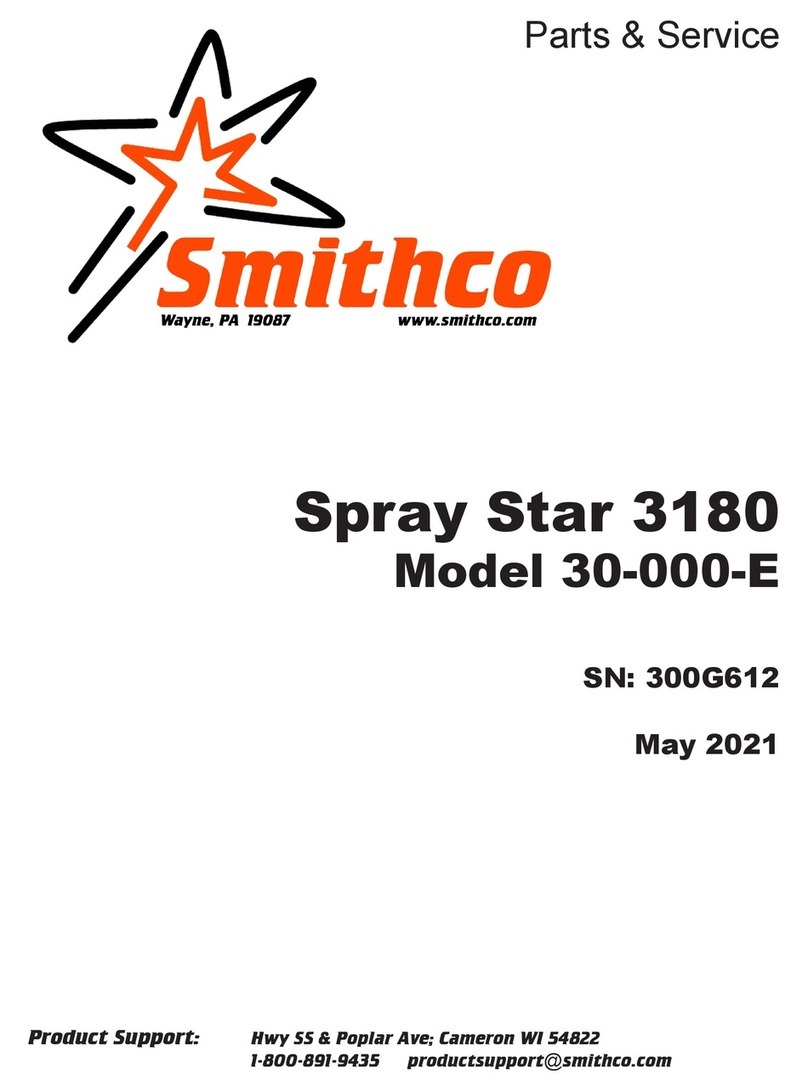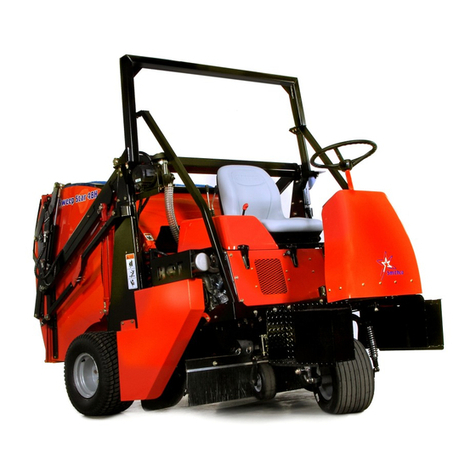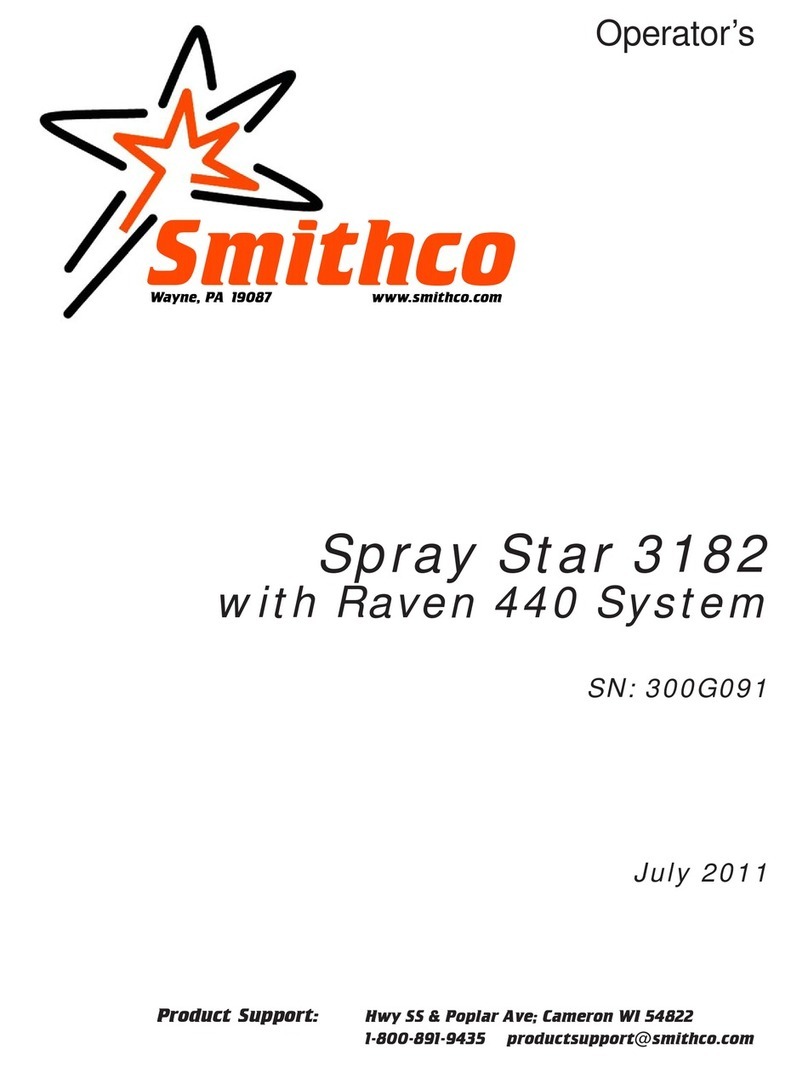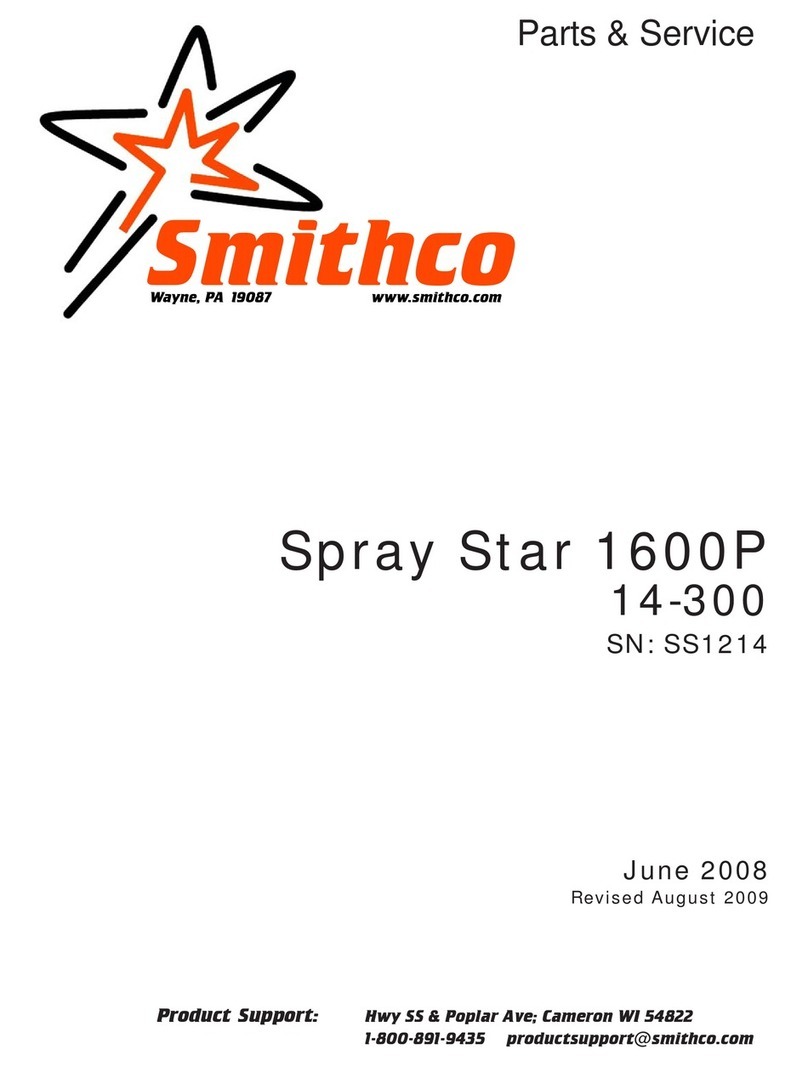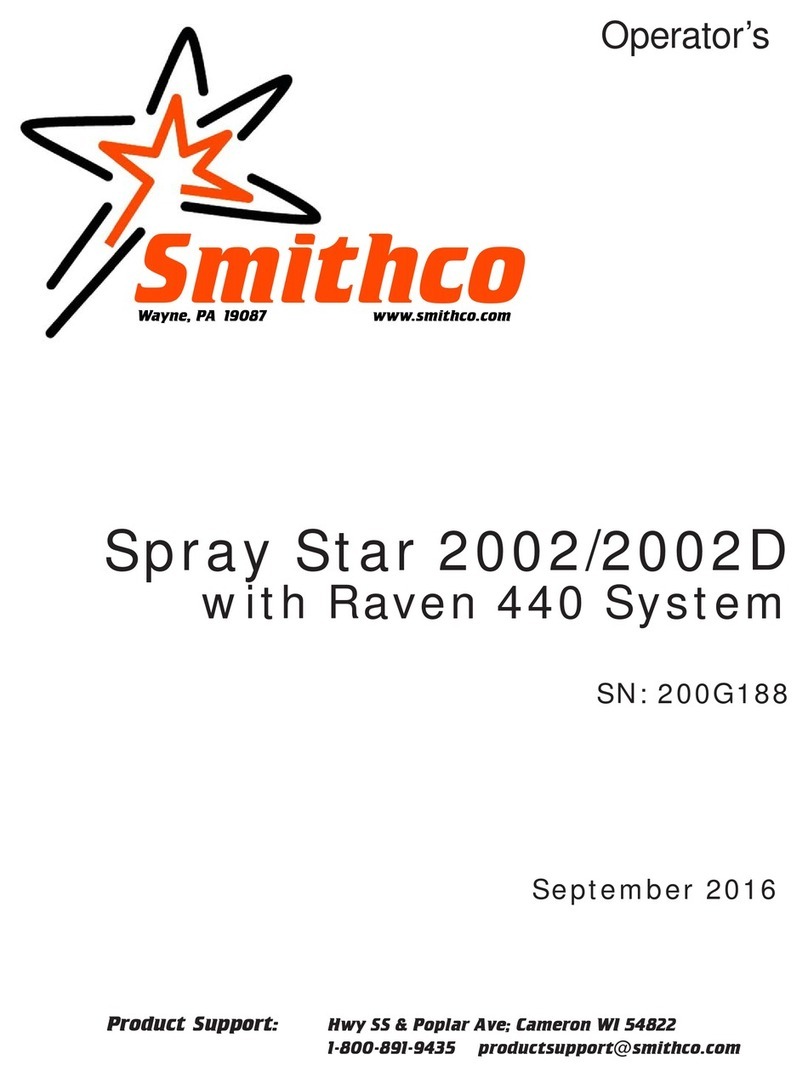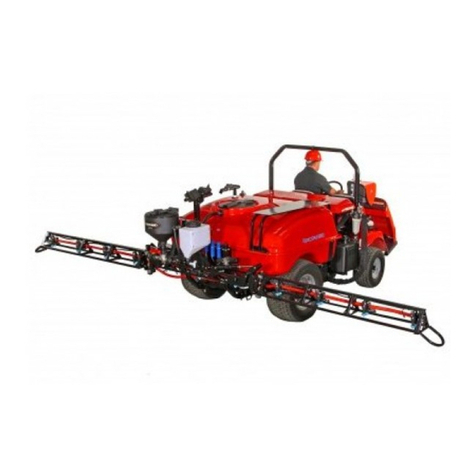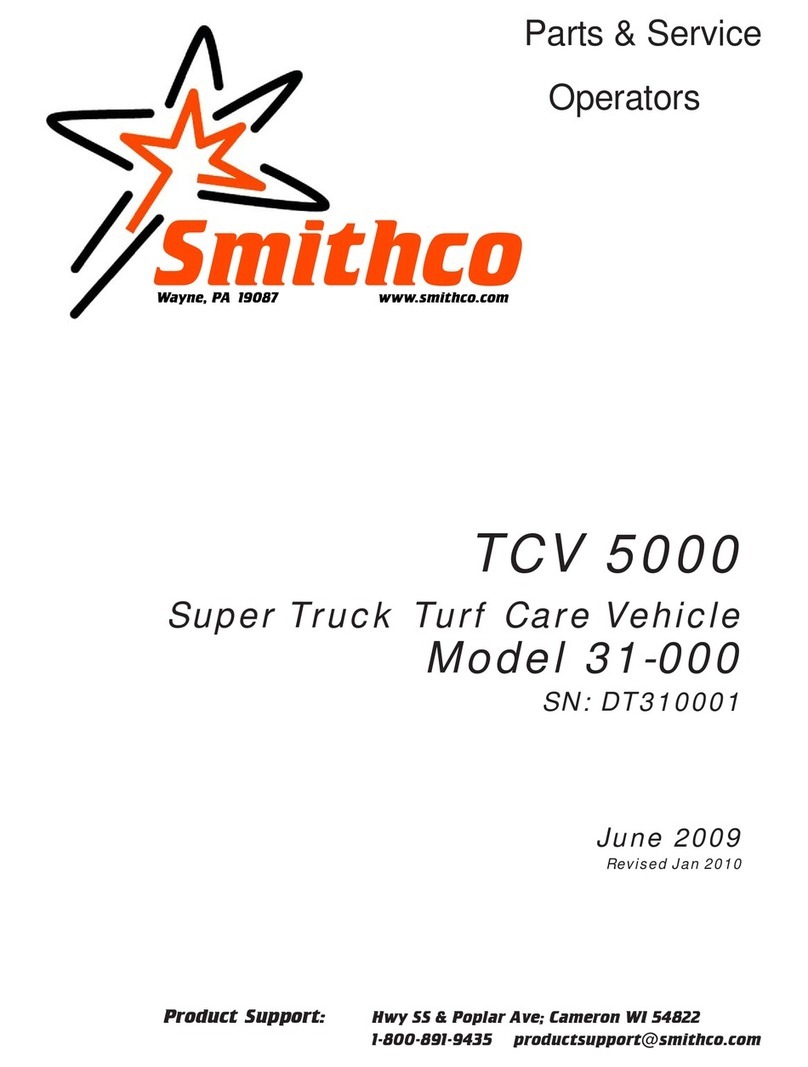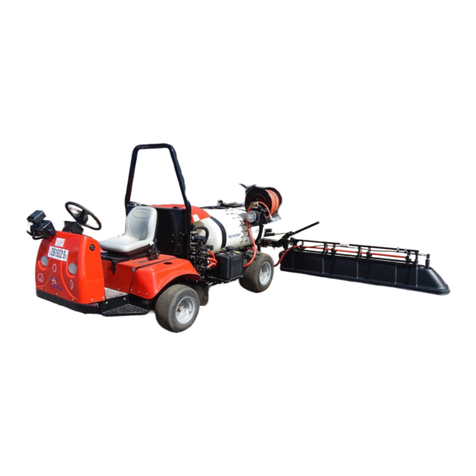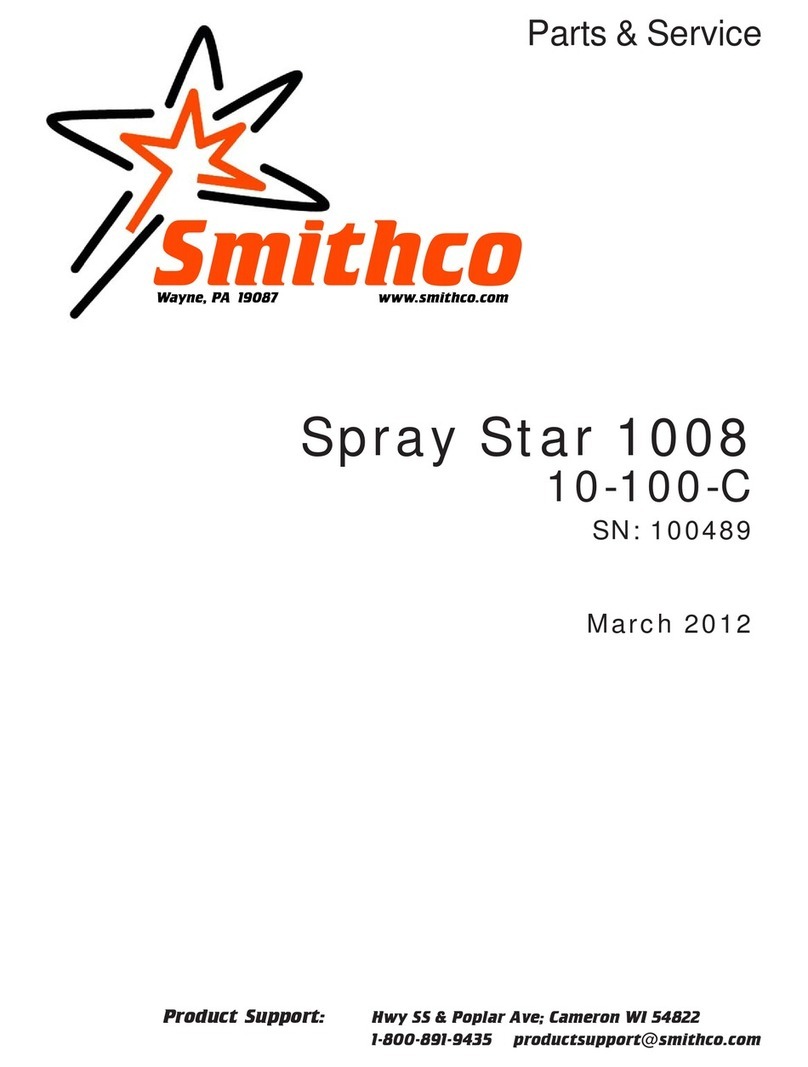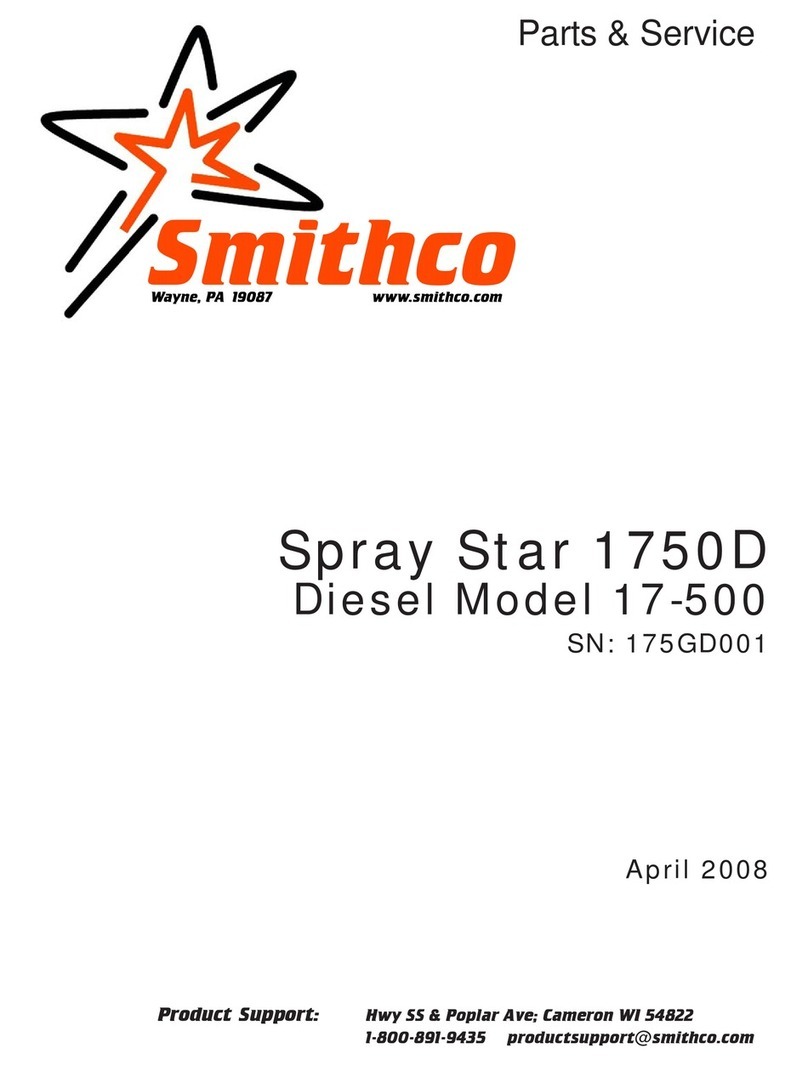
4
Introduction
PARTS MANUALS AVAILABLE ONLINE AT smithco.com
SAFEPRACTICES
1. It is your responsibility to read this manual and all publications associated with this machine.
2. Neverallow anyone tooperate orservice the machineor itsoptionalequipment withoutproper training and
instructions.Never allow minorsto operateanyequipment.
3. Learnthe proper useofthe machine, thelocation and purposeofall the controlsandgauges before you
operatethe equipment. Workingwithunfamiliar equipment canlead to accidents.
4. Wear all the necessary protective clothing and personal safety devises to protect your head, eyes, ears,
hands and feet. Operate the machine only in daylight or in good artificial light.
5. Inspect the area where the equipment will be used. Pick up all debris you can find before operating.
Bewareof overheadobstructions and undergroundobstacles.Stayalert forhidden hazards.
6. Neveroperate equipment thatis not inperfectworking order orwithout decals, guards,shields, or other
protectivedevices inplace.
7. Never disconnect or bypass any switch.
8. Carbonmonoxide in theexhaust fumescan be fatalwhen inhaled,neveroperate amachine without proper
ventilation.
9. Fuel is highly flammable, handle with care.
10. Keepengine clean.Allow theengine to cool beforestoring and always removethe ignition key.
11. Disengageall drivesand set parkbrake before startingthe engine.
12. Neveruse your hands tosearchfor oil leaks. Hydraulicfluid under pressure canpenetratethe skin and
cause serious injury.
13. Thismachine demands yourattention.To preventloss of controlor tipping ofthevehicle:
A. Use extra caution in backing up the vehicle. Ensure area is clear.
B. Do not stop or start suddenly on any slope.
C. Reduce speed on slopes and in sharp turns. Use caution when changing directions on slopes.
D. Stay alert for holes in the terrain and other hidden hazards.
14. Beforeleaving operator’sposition:
A. Disengageall drives.
B. Set park brake.
C. Shut engineoff andremovethe ignitionkey.
D. If engine has to run to perform any maintenance keep hands, feet, clothing and all other parts of body
awayfrom movingparts.
15. Keephands, feet andclothingaway from movingparts.Wait for allmovement to stop beforeyou clean,
adjustor service themachine.
16. Keepthe area ofoperationclear of allbystanders.
17. Nevercarry passengers.
18. Stop engine beforemakingrepairs/adjustmentsor checking/adding oilto the crankcase.
19. Use parts and materials supplied by only. Do not modify any function or part.
20. Use caution when booms are down as they extend out beyond the center line of the machine.
21. The tank is a confined space, take precaution.
These machines are intended for professional maintenance on golf courses, sports turf, and any other
area maintained turf and related trails, paths and lots. No guaranty as to the suitability for any task is
expressed or implied.
